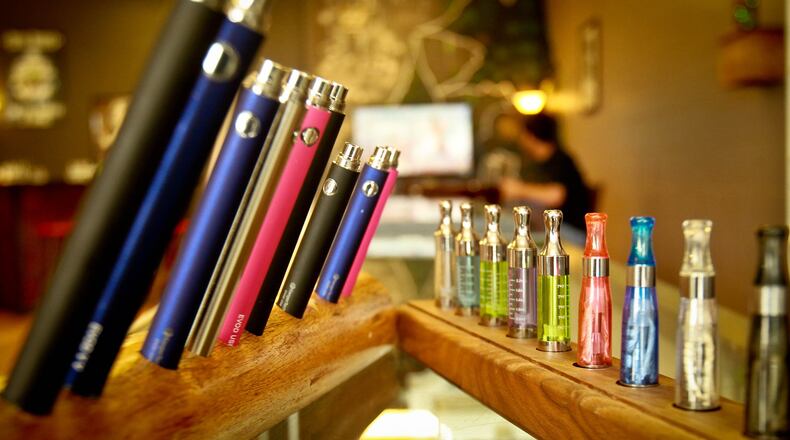“It’s going to be harming these teens brains because they’re not fully developed until around the age of 25,” Greene County Public Health educator Kristianna Durham said.
Early conversations
The percentage of U.S. teenagers who said they vaped nicotine in the past year roughly doubled from 2017 to 2019 -- for eighth graders from 7.5% to 16.5%, for 10th graders from 15.8% to 30.7%, and for 12th graders from 18.8% to 35.3%. In 2020, the rates held steady.
Durham said its good for parents to start having ongoing conversations about vaping early, even for younger grades like fifth graders.
“One really big thing that we’re pushing with parents is to have the conversation earlier,” Durham said.
Open ended questions like “What do you think about vaping” are better for starting a conversation, she said.
Parents should also be prepared for how to respond if their kids tell them they vape so the child doesn’t feel attacked. And she urged parents to keep in mind that vaping is addictive so it is important to be empathetic if a teen feels stress and has a hard time stopping.
“Blaming Big Tobacco — and not their kid — is going to be really helpful,” Durham said.
Help for parents
Parents who want to learn more about vaping or get advice on how to talk to their teen can get help at mylifemyquit.org. It’s helpful to celebrate all efforts to quit, to remind the teens that they are supported, and to be understanding if it takes time and multiple attempts to quit, according to Ohio’s My Life My Quit program.
“We really want to get more kids involved with this program because it has been really helpful for those who have used it, and it’s free,” Durham said.
Rates rise for college students
Local colleges are also restarting school and for college-age students, the percentage who vaped nicotine also rose dramatically between 2017 and 2019.
In 2017, 6.1% of college students and 7.9% of those not in college said they vaped nicotine in the past month, rising to 22% and 18%, respectively, in 2019, according to the annual Monitoring the Future survey.
University of Dayton in the only local university without a tobacco-free campus, though its does have other tobacco regulations like designated smoking areas, and officials said they had some “high-level conversations about potential revisions to our tobacco policy prior to the pandemic.”
“Since the pandemic, our health and safety efforts have been focused on our comprehensive response to the coronavirus,” the university stated, and adding officials do not anticipate renewing those conversations in the foreseeable future, particularly not until the pandemic is behind them.
Bruce Barcelo, prevention program coordinator with Montgomery County Alcohol, Drug Addiction, and Mental Health Services, said he worked with some UD students in late 2020 on a small survey of 75 students to gather information about being a 100% tobacco free campus. While a small sample size, 31 said they use nicotine vaping devices and a little over half of those surveyed said they would support the campus going tobacco free.
“Age 18 through the early 20s is one of the highest demographics for vaping,” Barcelo said.
Barcelo said that when schools go tobacco free, there’s often concern from administration about how the policies will affect students, but the switch years ago went smoothly at Wright State and Sinclair and these policies can help reduce use. With vaping becoming increasingly popular, however, he said it can be tricky to enforce policies.
“I speak to administrators all over the country and high school administrators grapple with the issue of vaping devices, because they are small, they are discreet and they don’t come with the smell of tobacco,” he said.
How to get help
My Life, My Quit is a free and confidential way to quit smoking or vaping, tailored to help young people who want to quit. Text “Start My Quit” to 855-891-9989 or go to mylifemyquit.org chat with a quit coach.
About the Author

